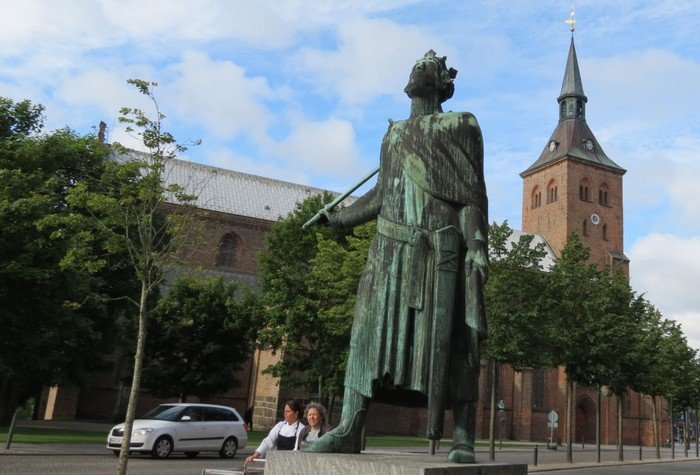Odense Cathedral History
History of the Cathedral
The History of the Church stretches back more than 900 years. Over the ages, it has been converted, extended and altered both inside and out on a number of occasions. Despite this, the building is probably the most beautiful example of a gothic Church in Denmark.

Very little is known for certain about the earliest history of the Church. It is named after King Knud (Canute), who reigned in Denmark from 1080 to 1086.
According to sources that include the chronicles of the English monk Ælnoth, the King was killed on 10 July 1086 after a peasant revolt that took Knud from the northern part of the Kingdom to Odense, ending in Sankt Albani Kirke (Church of St. Alban´s) close by.
Here the King was slain by the rebels, along with his brother Benedikt and 17 Retainers, all of whom had sought refuge in that Church.

The earlist history of the church
Remains of an earlier travertine Church have been found beneath the present building. This must be the Church the monk Ælnoth writes was being erected in 1095.
It is not known when that Church was completed. Remains of walls have been excavated which can be seen in the Crypt.
During archaelogical excavations near the south frontage of the Church and examinations of the existing extentions, remains have also been discovered of the Benedictine Sankt Knud's monastery. These extensions are now used as offices, a meeting room, schoolroom for confirmation candidates - and for other purposes linked to the Church.
The Crypt is a small interior in its own right, something unusual for a gothic Church. It is a part of the old section of the church.
When the Cathedral was to be restored in the 1870s, the Crypt was rediscovered and opened, after having been forgotten for centuries.
There is a door leading from the chrypt to the remains of the travertine Church. In the floor there are tombstones that include royal personages
The Reliquaries
There are two famous reliquaries in the Crypt, with skeletal remains of King Knud and his brother Benedikt who met their deaths as martyrs in the Albani Kirke in 1086, together with 17 retainers.
New investigations have strengthened the case for the remains in the reliquaries really being those of the canonised King Knud and his brother.
The skeleton in the caskets to the right bears evidence of a lesion in the pelvic region, presumably caused by a club swung from behind. This detail supports the tradition that King Knud was murdered while on his knees praying in front of the altar!

The Altarpiece
The magnificent Altarpiece dating from the 1500s and carved by Claus Berg is well worth examining in detail.


